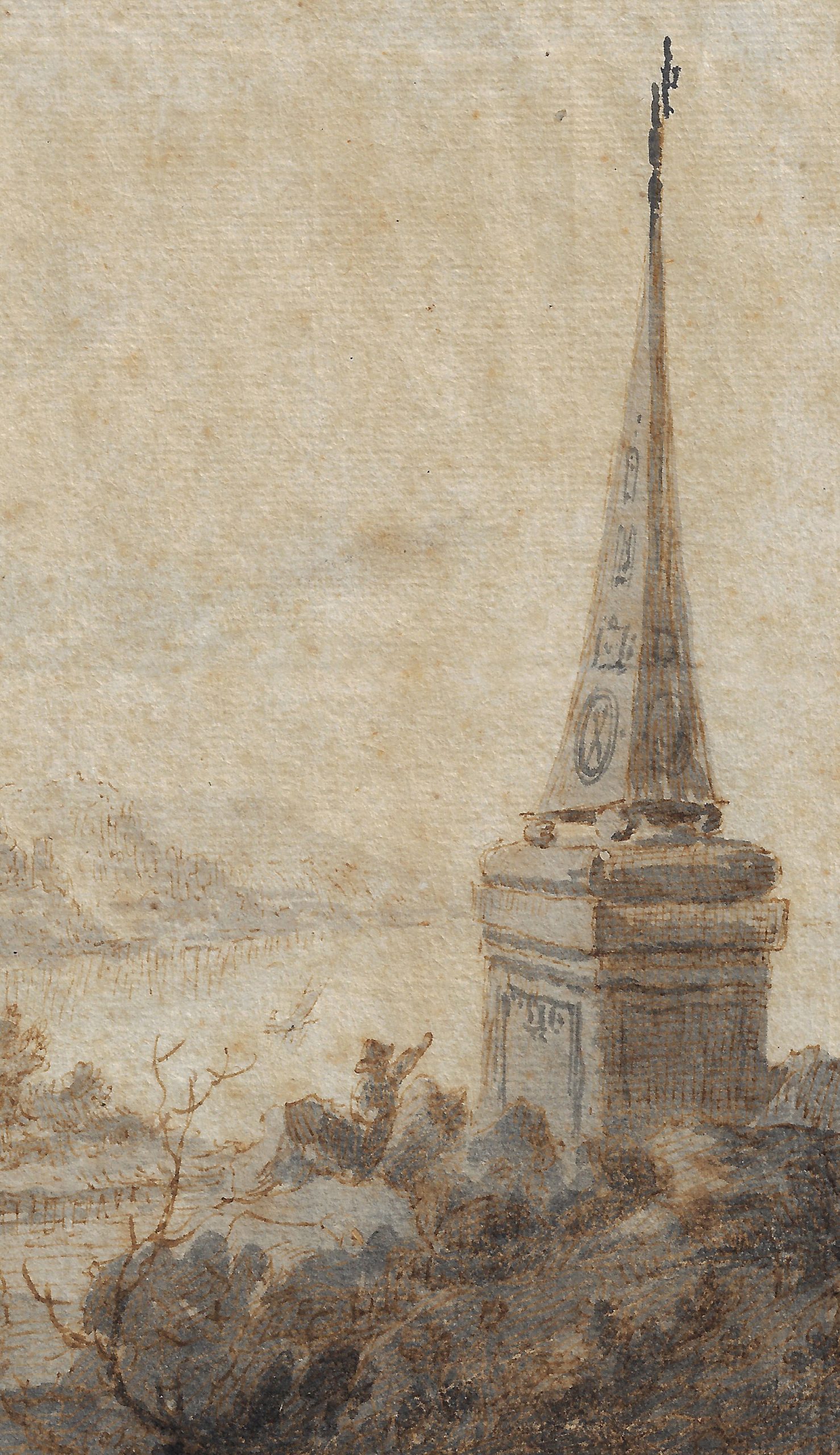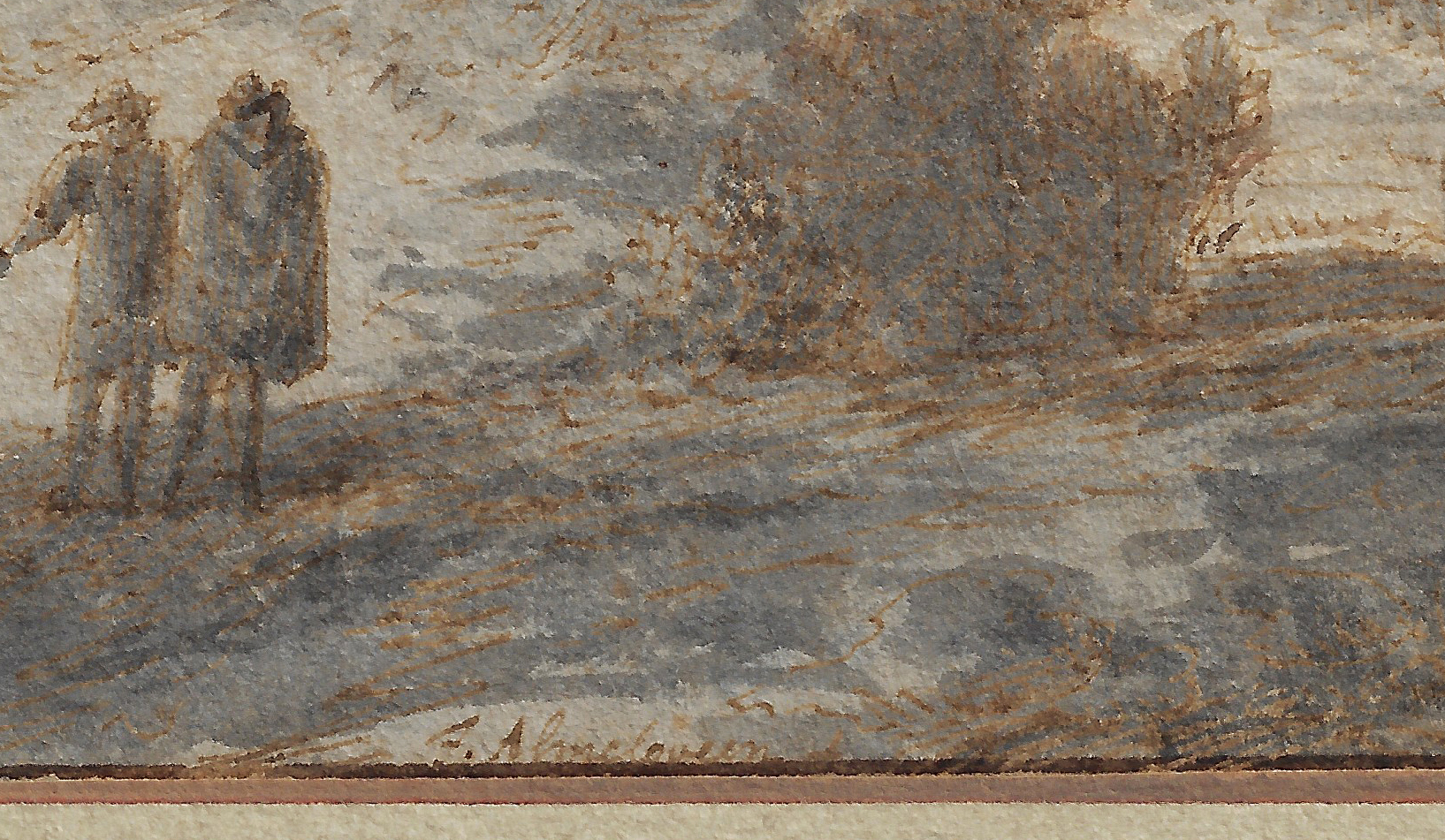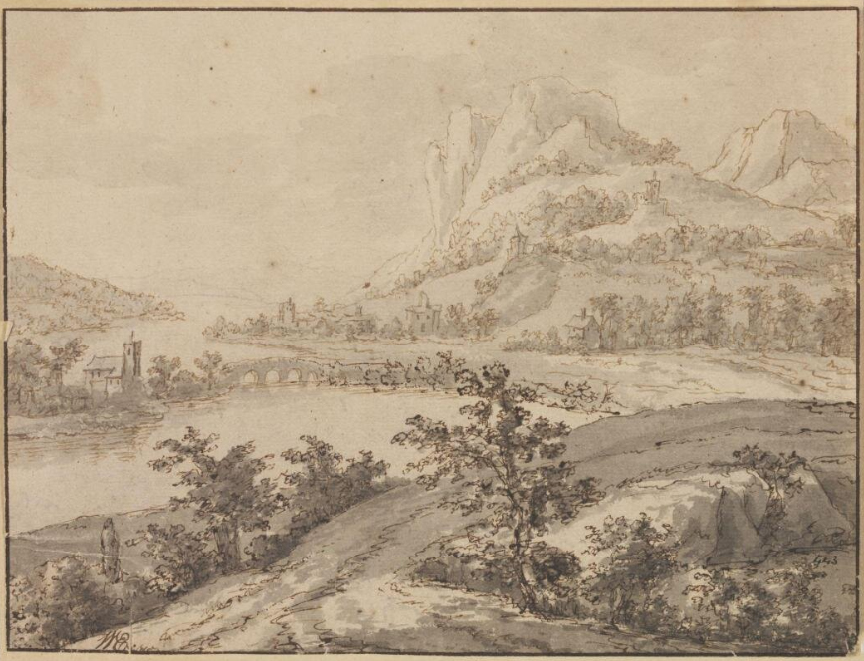JAN VAN ALMELOVEEN (Mijnden, near Breukelen 1656 – 1684 Amsterdam)
Jan van Almeloveen (Mijnden, near Breukelen 1656 – 1684 Amsterdam)
View near Frankfurt-an-der-Oder with a Triumphal Column
Pen and brown ink, grey wash, brown ink framing lines, 145 x 193 mm (5.7 x 7.6 inch)
Signed ‘J. Almeloveen’ (brown ink, lower left) and signed, inscribed and dated ‘frankfürt aan den ooder / Johannes ab Almeloveen fecit / den 5 Augusti 1680’ (verso, brown ink)
Provenance
~ Probably identical with ‘Een Landschap met een Eerezuyl, door J. Almeloveen’ (‘A Landscape with a Triumphal Column, by J. Almeloveen’, auction Miss J. Koerten and Widow A. Blok, Haarlem, 7 August 1765, Album O, no. 38 (sold for fl. 14.5 to ‘Oudaan’, together with the following lot).
~ Anonymous sale, unknown date, early 20th century, ‘3. ALMELOVEN (J.) (Ecole Hollandaise) Paysage animé de Personnages. Dessin à la plume lave d’encre de Chine. Signé en bas à gauche. Haut. 15 c/m. Larg. 20 c/m.’ (entry cut out and stuck onto backboard of frame)
~ Private collection, France
***
Jan van Almeloveen was born in 1656 as the son of the the minister Johannes van Almeloveen and Maria Jansonius.1 He is thought to have received his artistic training by Herman Saftleven (1609–1685) in Utrecht, and certainly made prints after drawings by Saftleven, including four landscapes representing the four seasons and a series of twelve views of villages in the environs of Utrecht. Van Almeloveen further made a mezzotint portrait of his father, and an etched portrait of Pope Clemens X and the Dutch theologian Gijsbertus Voetius.
The drawn oeuvre of Van Almeloveen is exceptionally small, only a handful of drawings is known today. Two drawings in pen and brown ink are preserved in the Rijksprentenkabinet of the Rijksmuseum (fig.).2 A third drawing, a View of the Rhine, dated 1679, is in the Victoria and Albert Museum, London (fig.).3 A few further topographical views by Van Almeloveen are known from references in historic auction catalogues. These include a view ‘tusschen Binghen en Ments’.4 Other references exist to unspecified landscape drawings, such as the ‘Twee gestoffeerde Bergagtige Landschappen, met Oostind. Inkt gewassen, door Almeloveen’ (‘Two Mountainous Landscapes with figures, washed with India ink, by Almeloveen’).5
The present recently discovered sheet is a valuable addition to Van Almeloveen’s rare corpus of drawings. Depicting a view of Frankfurt-an-der-Oder in Brandenburg, on the German-Polish border, it was drawn during a journey through German lands undertaken by Van Almeloveen in the years 1679 and 1680, documented in a few surviving drawings, including the sheet in the Victoria and Albert Museum and the drawing formerly in Sir Bruce Ingram’s collection.
1. For the artist, see the biography in Saur Allgemeines Künstlerlexikon: die bildenden Künstler aller Zeiten und Völker, Munich 1992- , vol. II, p. 601.
2. Illustrated here is Three men near a bridge, dated ‘27/5/1682’, 148 x 191 mm, inv. no. RP-T-1978-71, ‘Keuze uit de aanwinsten’, Bulletin van het Rijksmuseum, 26 (1978), p. 127, 136, afb. 15
3. Signed and dated ‘Johann van Almeloveen, fecit 1679.’, pen and brown ink, grey wash, 148 x 179 mm, inv. no. Dyce.443, Jane Shoaf Turner and Christopher White, Catalogue of Dutch and Flemish Drawings in the Victoria and Albert Museum, London, 2014, vol.I, cat.2, pp.3-4.
4. Collection Sir Bruce Ingram, London, seen in 1946 by Horst Gerson at Colnaghi, London (RKD HdG fiches no. 1003892).
5. Auction N. Albrechts a.o., Amsterdam, 11 May 1772, no. 34.






